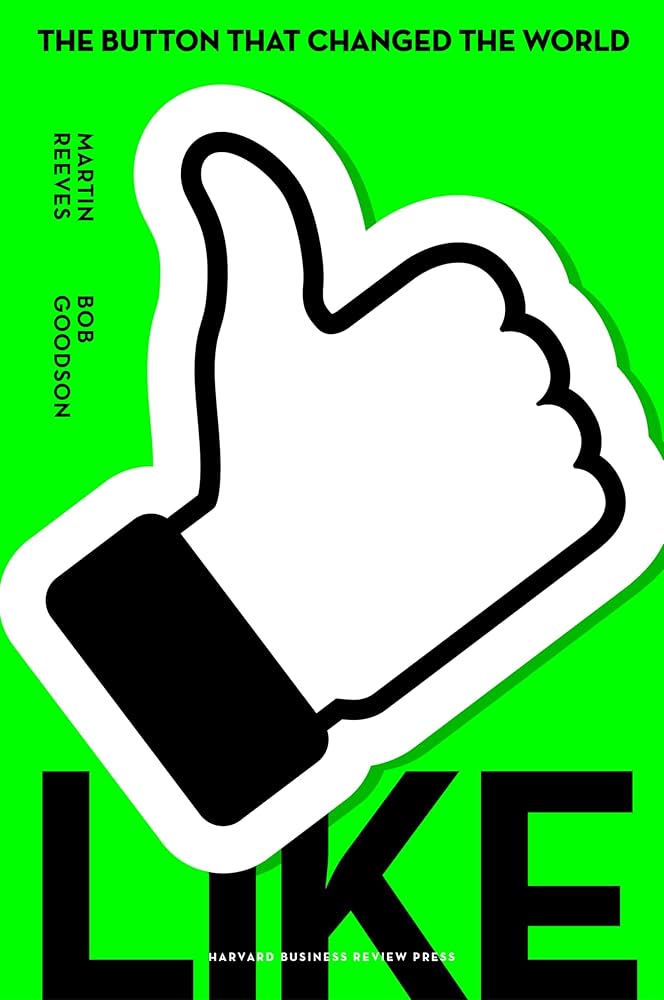Once upon a time the thumbs-up sign meant you deserve to die. But then so did the thumbs-down sign. In this respect the scenes in Gladiator in which Joaquin Phoenix, as the emperor Commodus, determines a man’s fate by the upward or downward jerk of his thumb are historically inaccurate. In reality, when one gladiator had another at his mercy in the Colosseum, the crowd signalled their verdict either by sticking their thumbs out, which meant death, or, if they felt the man had fought bravely, they would wrap their fingers around their thumbs to symbolise a sheathed sword.
This is just one revelation in Like: The Button that Changed the World, an engrossing book by Martin Reeves and Bob Goodson that traces the history of the “like” button from the birth of the thumbs-up gesture (this stand-in for approval goes back no further than the late 19th century) to our present-day enslavement to screens and social media.
The author’s premise is that the like button is the nicotine in the cigarette of our online lives. It’s the part that has us slumped in darkened sitting rooms ignoring one another, our faces palely lit by the twin glows from Netflix and the miniature screens in our hands. The argument goes something like this. Social learning—learning by watching or listening to others rather than by our own experience—is one of our greatest achievements as a species.
We are hardwired, too, to identify the wise by their popularity. If they are liked they must know something we don’t. Thus liking and being liked becomes a core mechanism in our evolution, to which we have attached the release of tiny amounts of dopamine. We see someone has liked our post and we get a little hit of pleasure. This, though, is the feelgood chemical that we also get from taking cocaine. In the words of the psychiatrist Anna Lembke, what social media has effectively done is taken human connection and “druggified” it by “distilling it down to its most essential reinforcing properties”.
According to the authors, there are no villains here, or at least not conscious ones. Facebook’s founder, Mark Zuckerberg, wasn’t menacingly stroking a Persian cat when he added the like button to his social network. In fact, he hesitated over the adoption for months. Yet, after he finally introduced it in 2009—allowing users to click on a like button, emblazoned with a thumbs-up sign, to show that they got a kick out of content—Facebook’s estimated value soared from $15 billion to $50 billion.
Reeves and Goodson are businessmen first and authors second. The former is the head of the BCG consultancy’s think tank; the latter is a tech entrepreneur. This is a defining feature of their book. They are more interested in the truth about how innovation happens than in selling us seductive stories of solitary geniuses having eureka moments. Debunking traditional narratives becomes the narrative. In an illustrative digression they challenge the hoary hero story of Humphry Davy inventing the miner’s safety lamp at the Royal Institution through selfless sweat and inspiration. The reality was messier, involving a nasty spat with the engineer George Stephenson over which of them had invented the lamp first.
As with the lamp, so with the like. In the mid-2000s several companies came up with prototypes of the like button around the same time, including Yelp, where Goodson contributed. He still has a sketch he did in 2005 showing a thumbs-up sign. These early versions had a range of motivations. Some wanted to incentivise user-generated content. Some wanted content rated so it could be honed. What no one predicted was how the tail would wag the dog, with people going online precisely in order to like and be liked.
Now six trillion likes are triggered annually worldwide. That’s about 16 billion daily likes—the equivalent of every person on the planet liking something 20 times a day. How many likes are on Instagram? According to a 2019 survey, half of young Americans said they would like to be online influencers. The global influencer market—which deals with images rather than words—has risen in estimated value from £2 billion in 2016 to £24 billion in 2024.
In his 1961 essay ‘The Retreat from the Word’, the critic George Steiner predicted the arrival of a post-literate culture in which fewer and fewer people read and the written word can no longer claim to be the dominant mode of communication. The threat, as he saw it, lay partly in the mathematical notation of science and partly (quaintly enough) in the lure of the gramophone, thanks to which people could listen to music in the evenings instead of getting down to the proper business of reading books.
Well, the future is here, Prof Steiner, but it comes to us courtesy of the tech bros, with their search for ever more frictionless customer engagement. The skins of effort have been shed sequentially. We have gone from the knee-jerk responses of trolling and outrage on social media to the lazy gallery of emoticons and cartoon emojis, to the climax of a reaction so undemanding as to make it almost empty of meaning—the like.
Reeves and Goodson mention a number of reasons to distrust social media but say they “come not to bury or to praise” the like button; rather, their focus is on how progress works. Their hope is that by better understanding innovation, we can harness it.
My hope is that we can do the same with dopamine. The authors quote a list, compiled by a neuroscientist, of things that trigger the chemical: “shopping, orgasm, learning, highly calorific foods, gambling, prayer” and so on. That third item—learning—almost passes unnoticed. Yet it feels like a revolutionary thought that there could be a grain of cocaine in learning. It suggests that we might choose, individually, to replace the kick of screen time with reading good books like the one under review. I’d give a thumbs-up to that.

